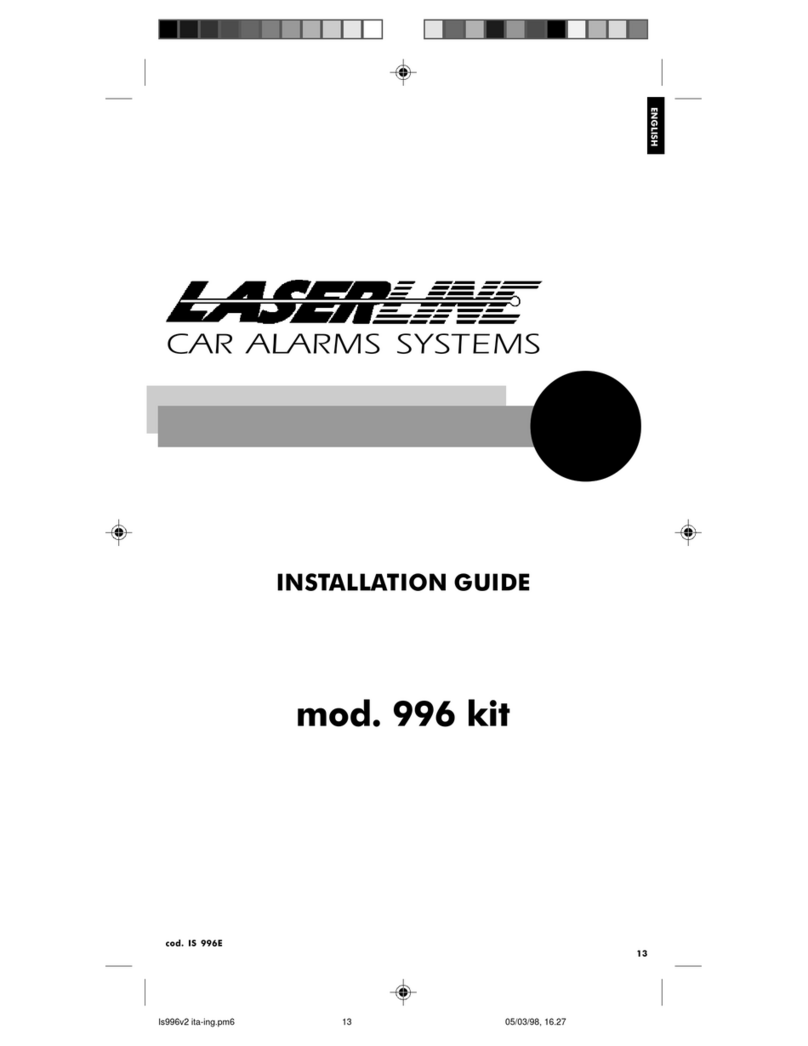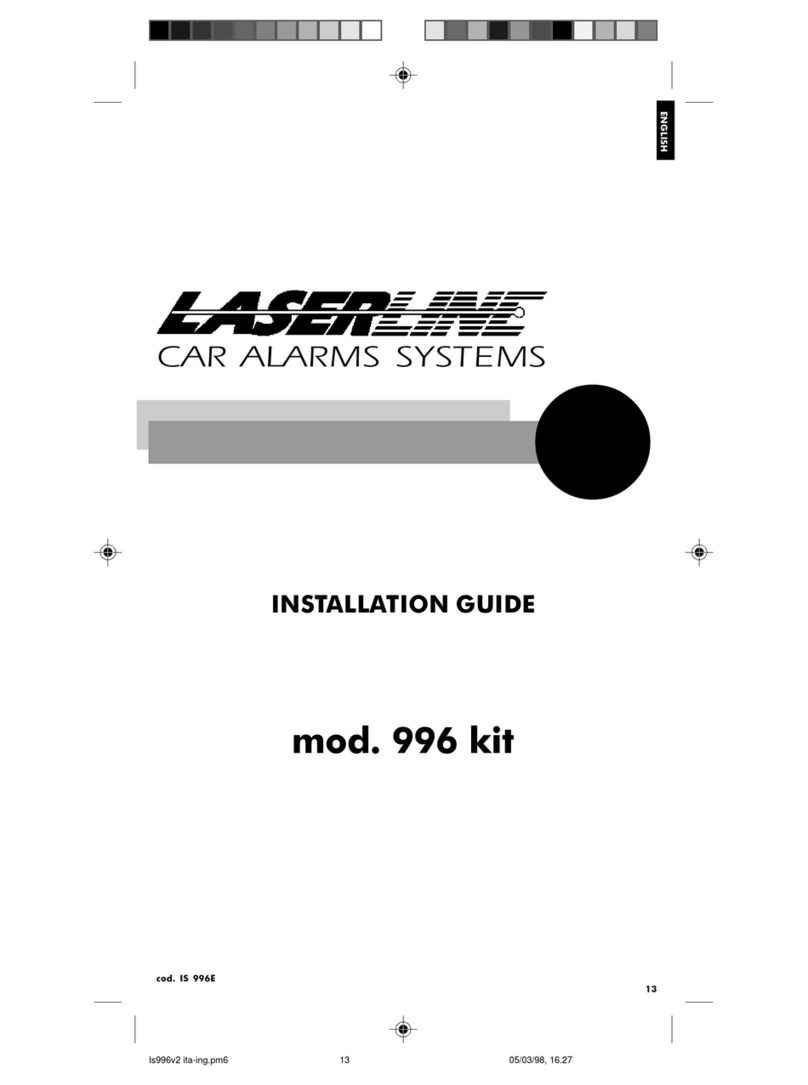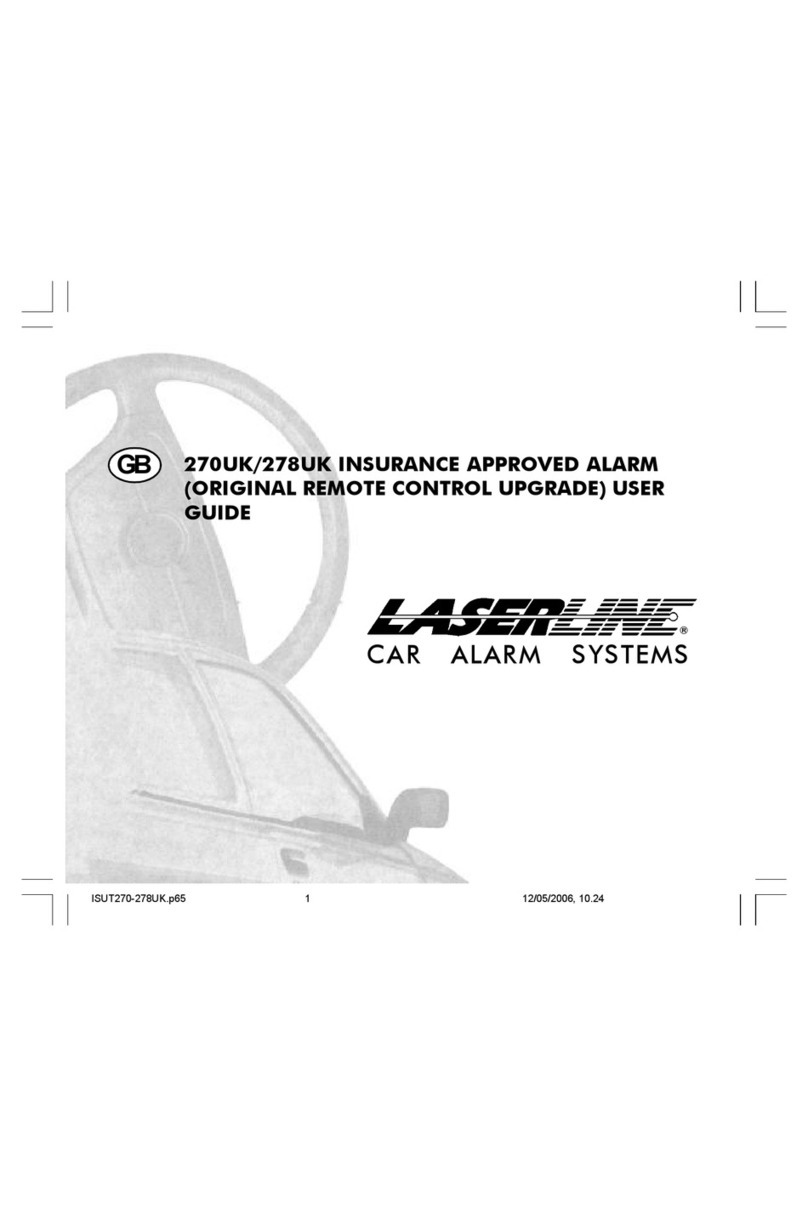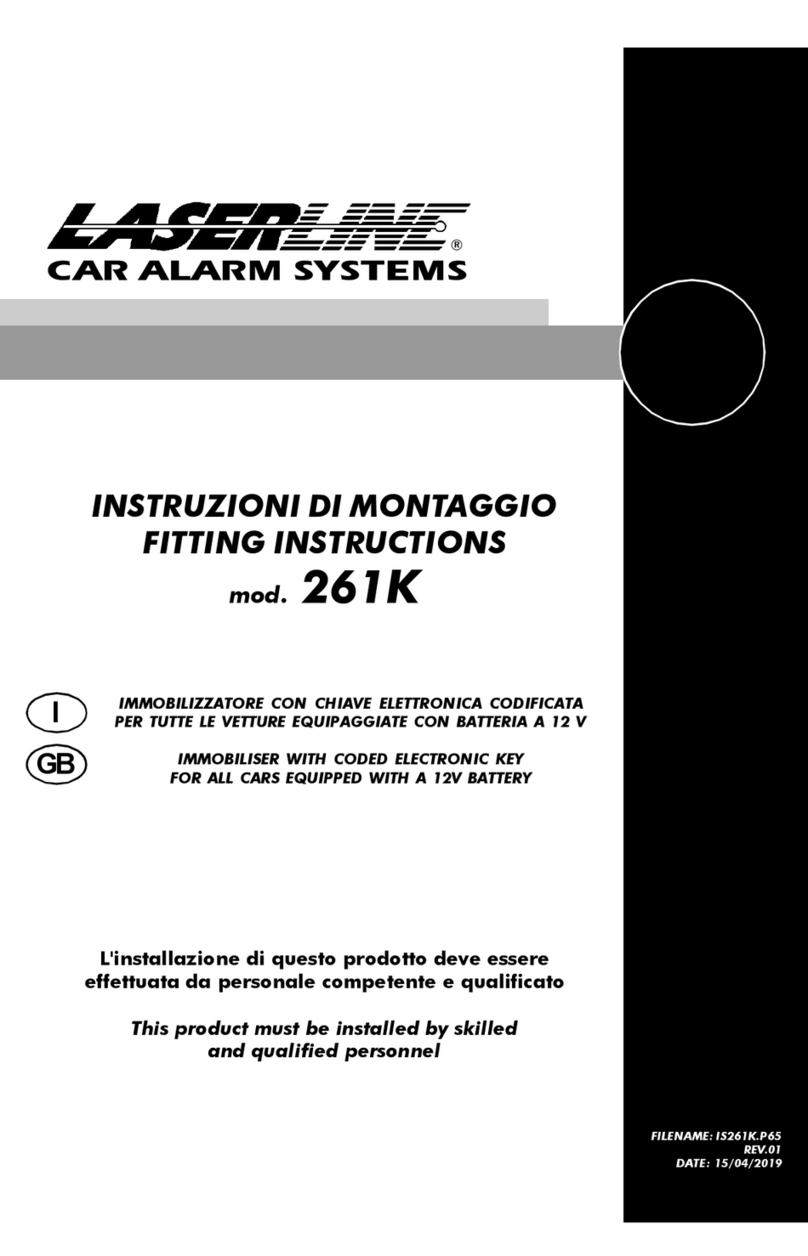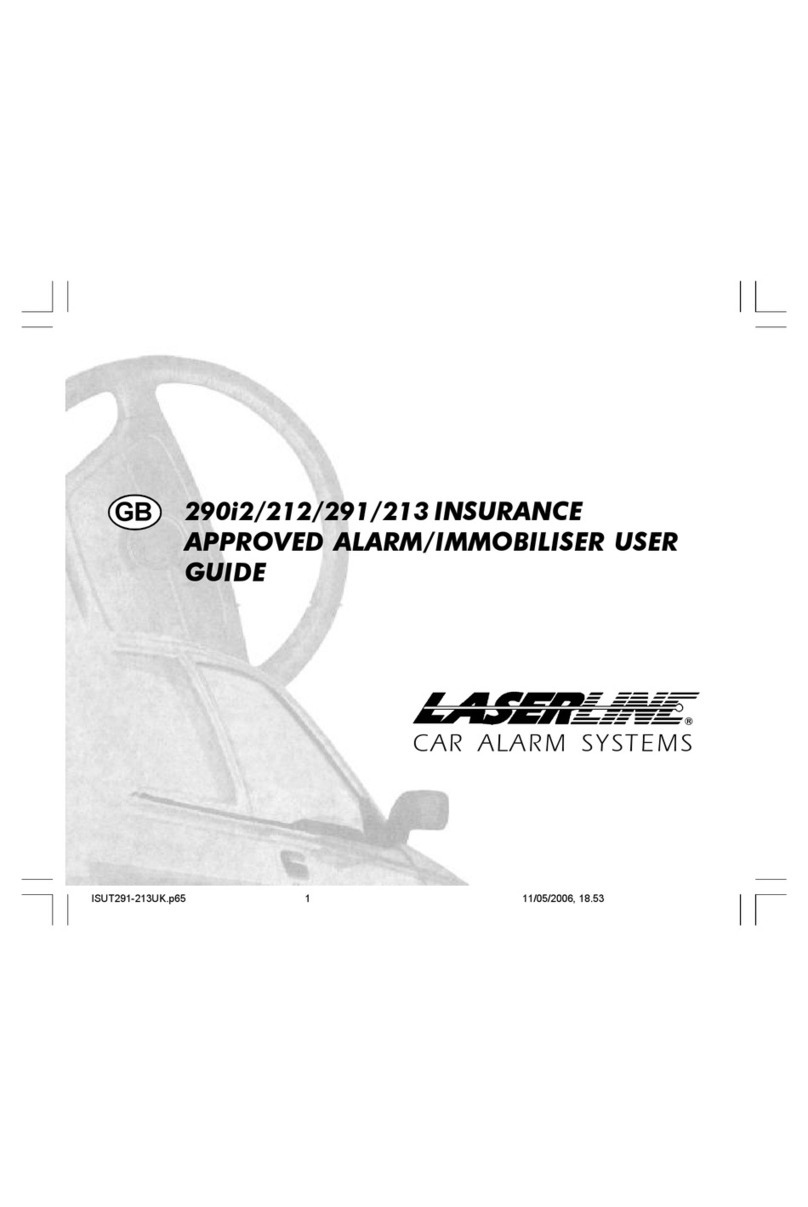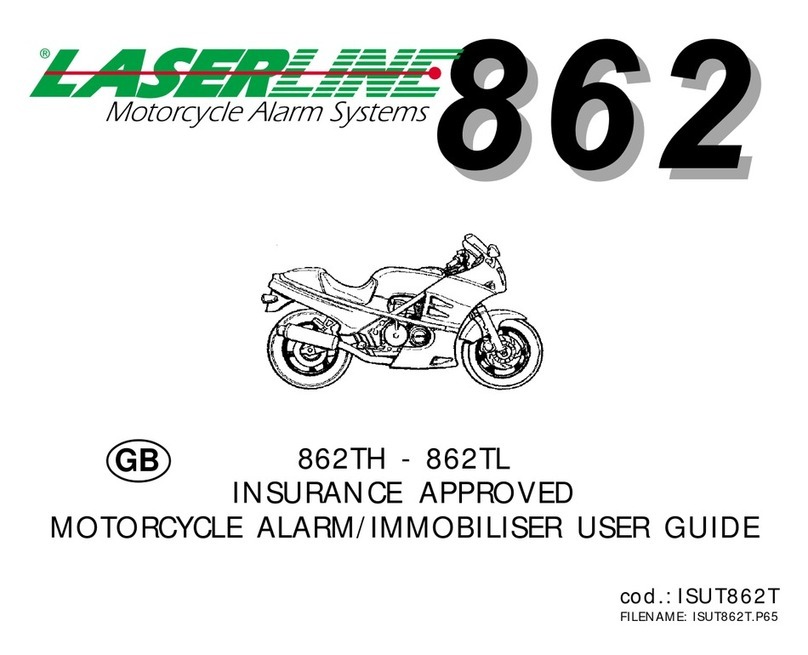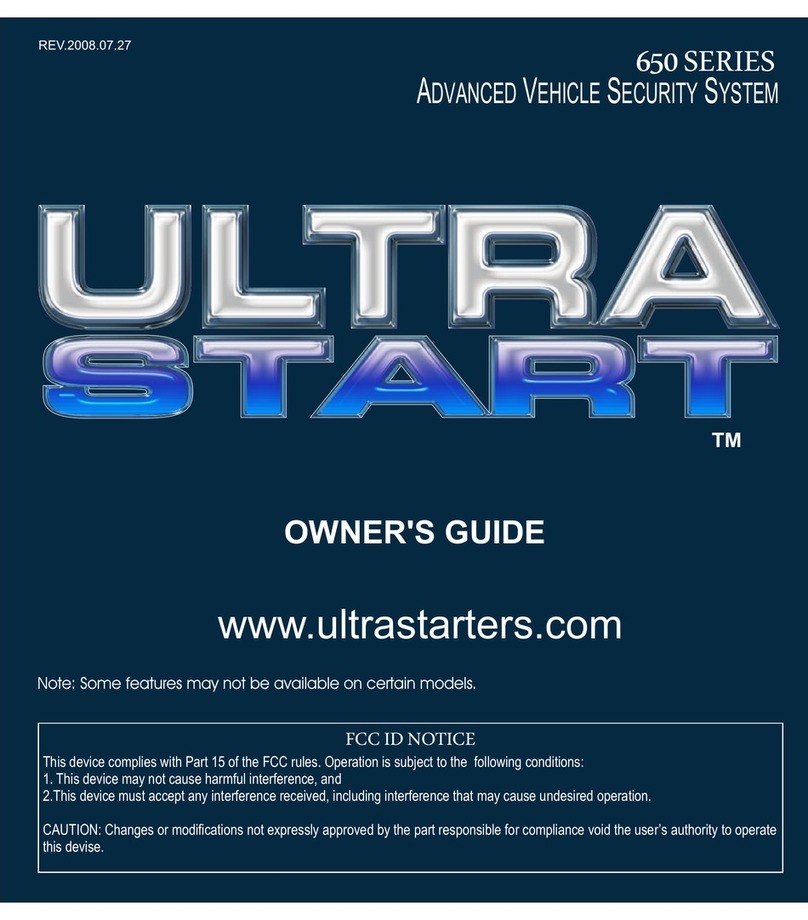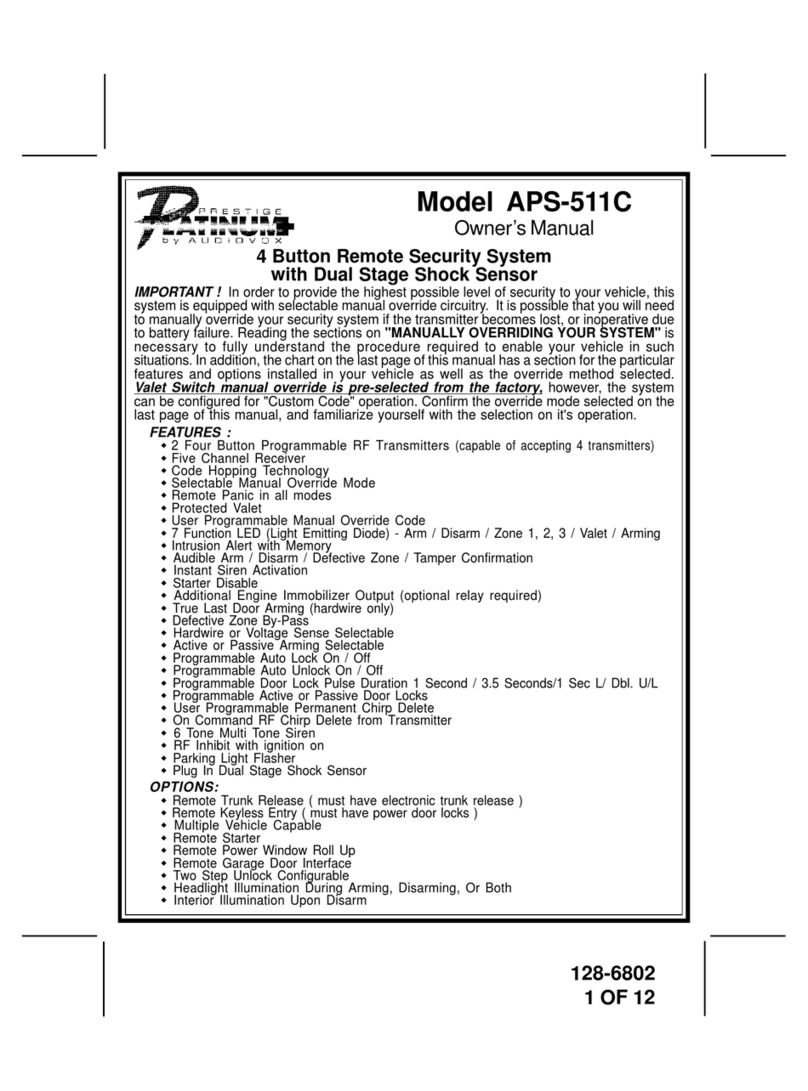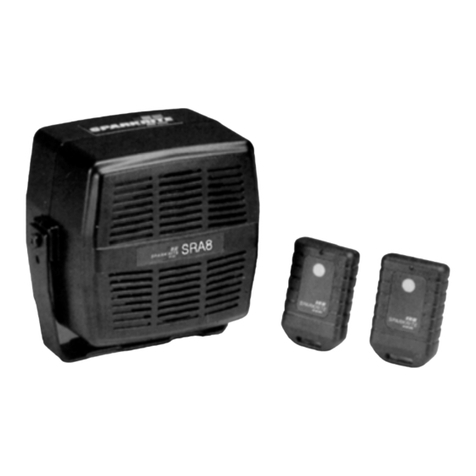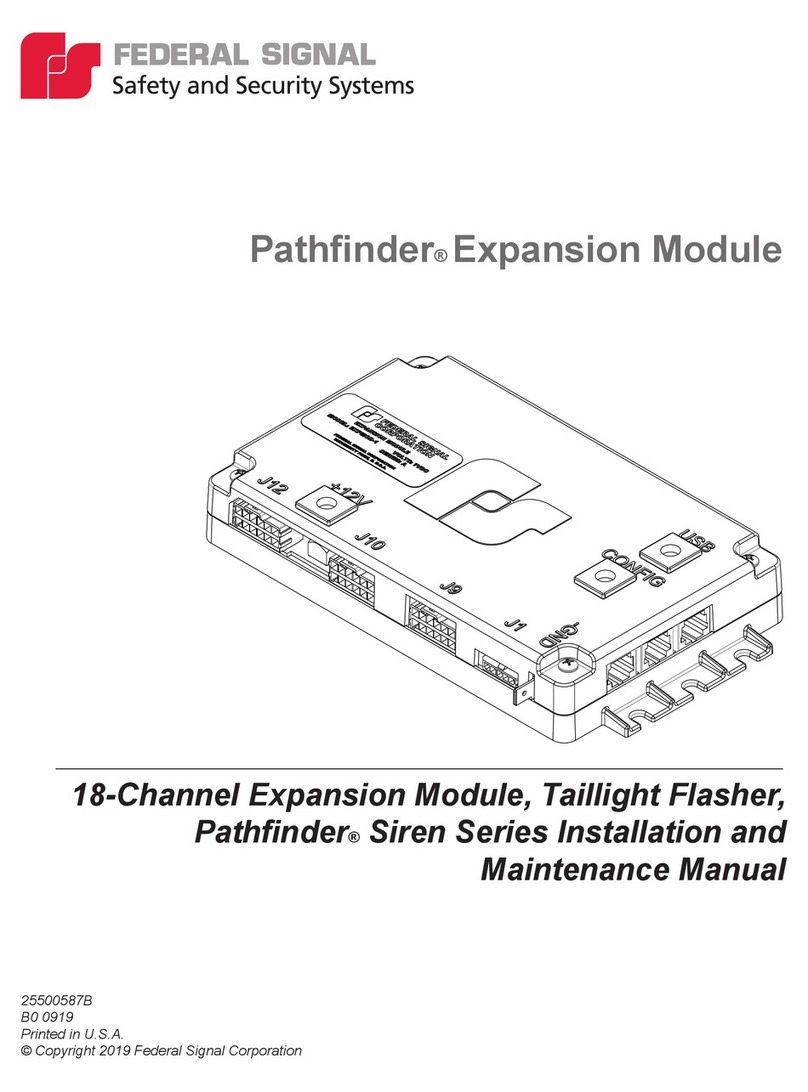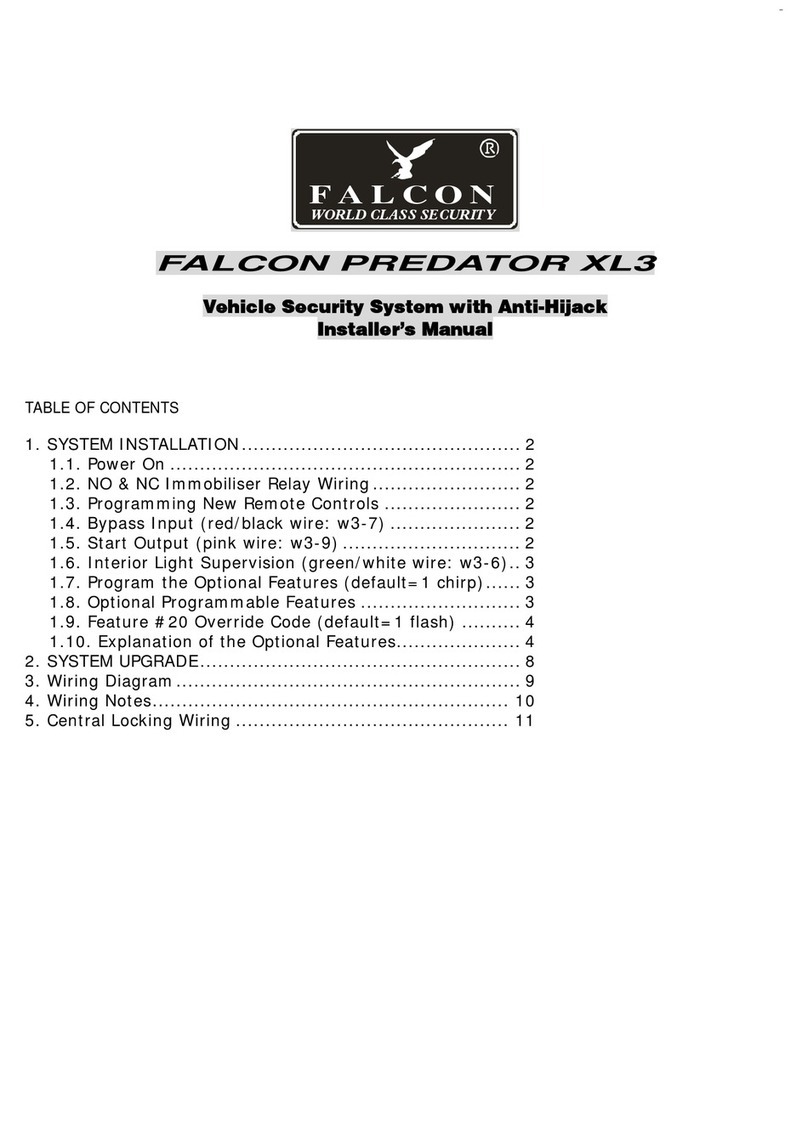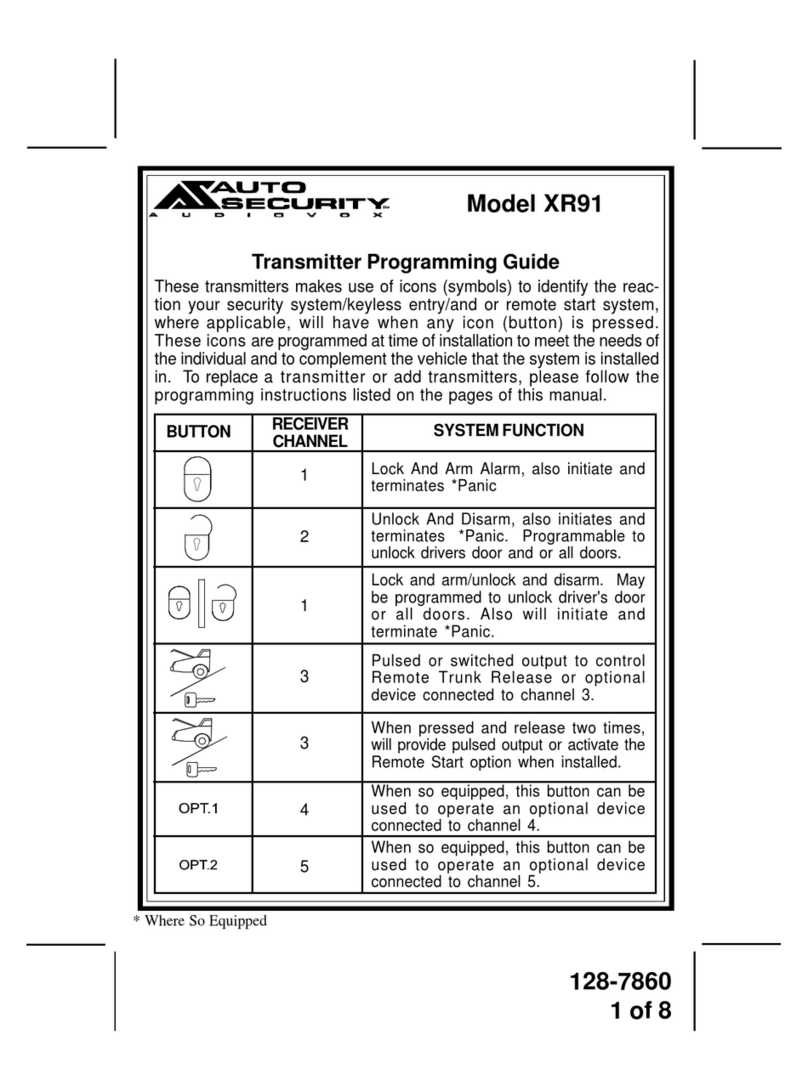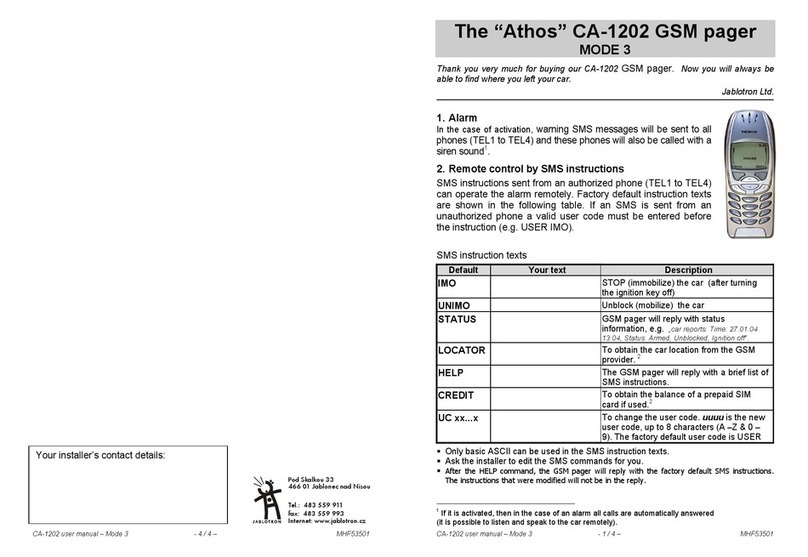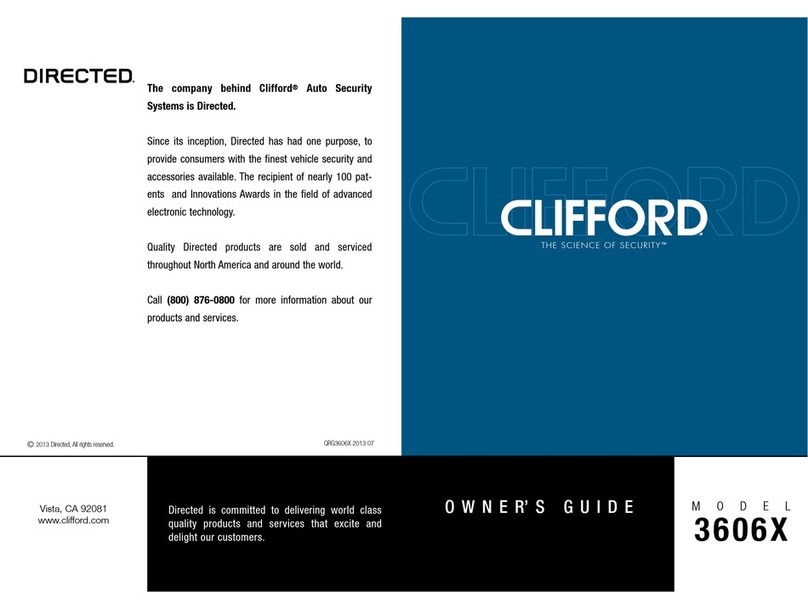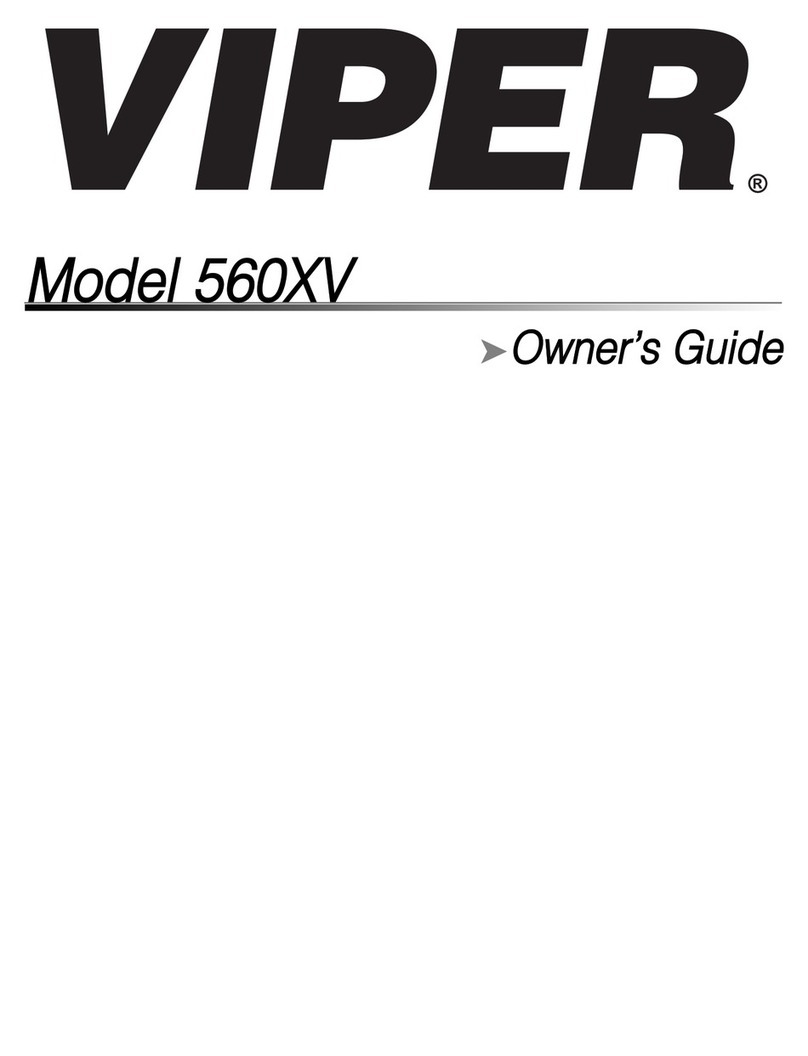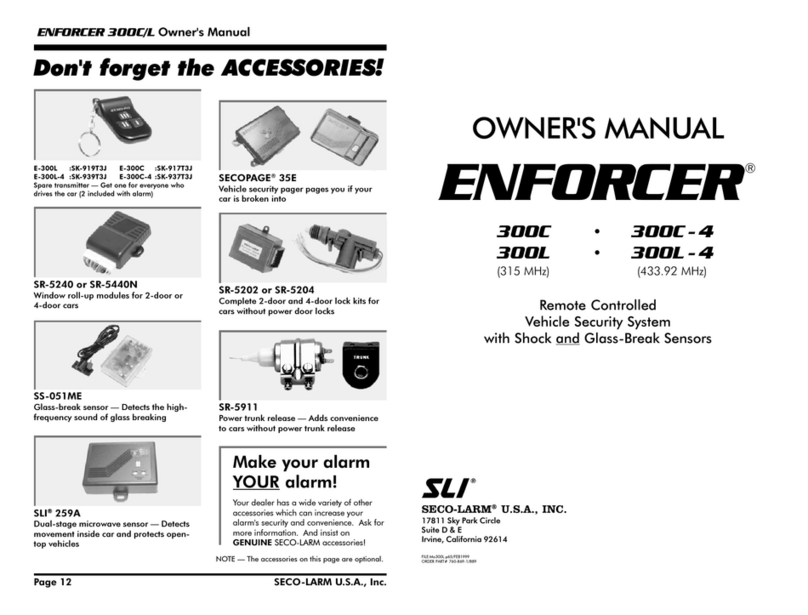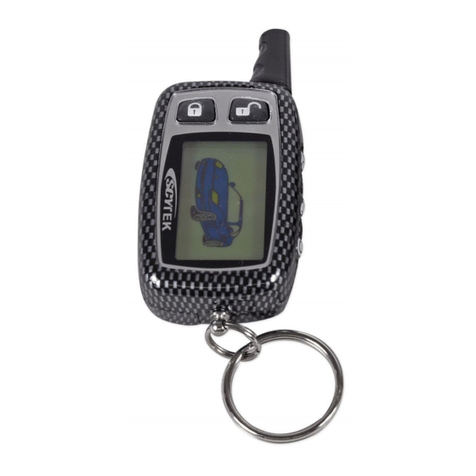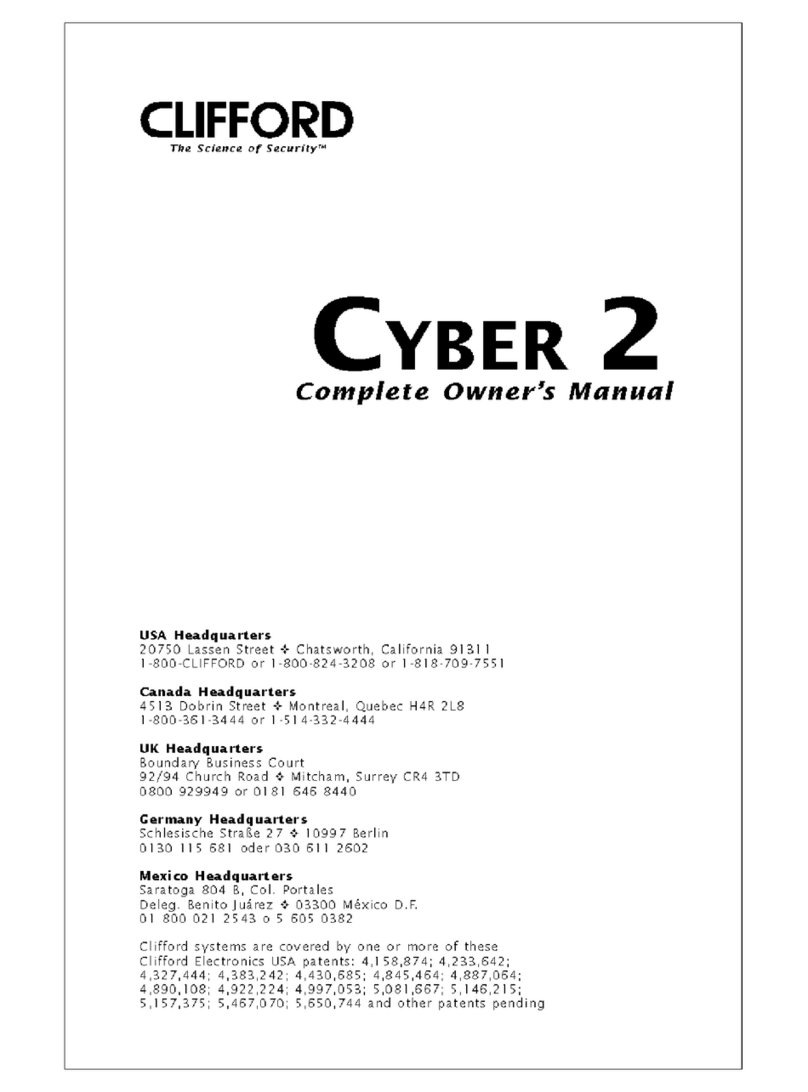
ENGLISH
15
AUTOMATIC ENGINE STOP: 20" after the ignition is switched OFF, PASSIVE ENGINE
immobilisation becomes effective. Within 20" you can reset the time turning the ignition key
ON. When the functions are activated, the LED is constantly ON and it is not possible to start
the engine. To cancel the passive engine immobilisation turn ignition key ON and push
central button.
This function can be excluded to set the dip-switch n°4 in ON position (see dip switch coding table)
ANTI-CODE GRABBING WITH VARIABLE CODE ENCRYPTION
Today's criminals are shifting from code scanning to a new, much more efficient method of
electronic thievery: "code-grabbing."
When you use a car alarm remote control, it transmits a digital code to your alarm. A thief
with a code-grabber can record that code right off the air from hundreds of feet away, then
play it back when you're gone to disarm the alarm and unlock the doors.
Within seconds, your car is just another theft statistic. Fortunately, LASERLINE Anti-Code
Grabbing randomly changes the transmitted code every time you press any of the remote
control buttons. The system's microprocessor randomly generates each code. The remote
control NEVER sends the same code twice, and the system control unit NEVER accepts the
same code twice. That makes code-grabbing utterly useless against LASERLINE alarm
systems.
SELF CODING REMOTE HANDSETS
In case you loose a remote or need to code a new one your installer will be able to quickly
re-code and replace it in the following way:
l ) Ensure alarm is disarmed with the original remote handset.
2) Turn ignition to on position.
3) Open bonnet and remove access plate on rear of siren.
4) Move DIP switch No. 1 to ON position. The LED on the dashboard will now light on
constantly.
5) Within 30 seconds of constant LED illumination, press arm/disarm button on the new
remote until facia LED 'blinks'. New remote is now coded.
6) Again within 30 seconds code original remote as above (5).
7) Reposition DIP switch No. 1 to its original position and refit access plate on rear of
siren.
8) Turn off ignition and test remote operation.
You can add a maximum of 4 remotes
ULTRASONIC EXCLUSION THROUGH REMOTE CONTROL
- Open the driver side door and turn the ignition key ON.
- Push the button n° 1 on the remote handset.
The LED will flash once. This means that the ULTRASONIC function has been excluded. Re-
establishment will happen automatically on switching the ignition key ON.
ULTRASONIC AND WINDOW CLOUSURE EXCLUSION
- Open the driver side door and turn the ignition key ON.
- Push the button n° 2 (panic) on the remote handset.
The LED will flash twice. This means that the ULTRASONIC AND WINDOW closure have been
excluded. The re-establishment will happen automatically on switching the ignition key ON.
ULTRASONICS AND WINDOWS CLOSER EXCLUSION (only 989EES)
Arm the alarm by remote button n° 1 and within 30" depress button n°2 . Exclusion of ultrasonics and
windows closer will be signalled by 1 flash of indicator lights and 1 acoustic signal.
Functions will be automatically restored when alarm will be disarmed.
SIREN EXCLUSION THROUGH REMOTE CONTROL (only 989EES)
Turn the ignition key ON.
Push the button n° 2 on the remote handset (see fig 1).
The red LED will flash once. This means that the SIREN function has been excluded.
These functions will be automatically restored when alarm will be disarmed.
is 989E ita-ing.pm6 05/03/98, 16.4215

